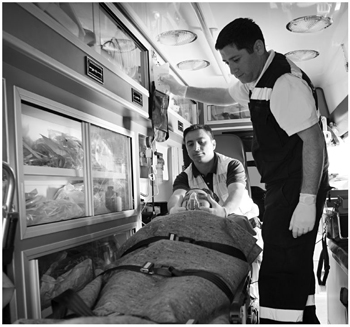Organizing the emergency medical services (EMS) system to improve survival from out-of-hospital cardiac arrest (OHCA) is absolutely essential. EMS, unlike other aspects of care for victims of OHCA, may be both measured and controlled. While the treatment of out-of-hospital sudden cardiac arrest has remained relatively stable over the past few decades, new measurement technology has opened a window onto the details of resuscitation which was largely unavailable prior to 2000.
Technology has allowed measurement of the precise time intervals elapsing between different aspects of attempted resuscitations and fostered an enhanced attentiveness to the importance of continuous high-quality chest compressions in addition to early defibrillation and appropriate drug therapy. Awareness that survival rates as high as 50% are possible for victims with witnessed VF has sparked an interest in improving OHCA survival across North America and around the world.3 This renewed interest has led to the development of several new approaches to treatment as well as strategies for enhancing proven existing therapies.
Animal research emphasizing the benefits of continuous delivery of quality compressions,3 as well as research showing that many health professionals provided poor quality CPR,4-6 led to the 2005 changes in the recommended compression/ventilation ratio from 15:2 to 30:2.7Research studies quantified the detrimental effects of excessive assisted ventilation8 and catalyzed efforts to control ventilations more precisely.9 Several studies highlighted a lack of efficacy of several resuscitation drugs7 and directed prehospital therapy toward a back to the basics approach. These recent updates to the care of the SCA victim have improved survival.
The 2010 American Heart Association Guidelines for CPR and Emergency Cardiovascular Care (ECC) updated recommendations for care for SCA victims.10-12
Recommendations for EMS systems include:
- Improving the recognition of SCA by 911 call takers and urging 911 call takers to instruct callers to begin chest compressions while awaiting EMS arrival.
- Providing high-quality CPR with minimal interruptions in chest compressions and with controlled ventilations. Beginning CPR with compressions rather than ventilations (C-A-B instead of A-B-C) to emphasize the primary importance of chest compressions and to decrease barriers to starting CPR.
- Establishing OHCA Systems of Care including linking with community AED programs, coordinating with receiving hospitals to optimize post-cardiac arrest care, and measuring survival to hospital discharge.
- Implementing quantitative waveform capnography for intubated patients to monitor endotracheal tube placement and the quality of the resuscitation.
- Working as a team during resuscitation with defined roles and clear communication.
The American Heart Association Guidelines for CPR & ECC are available online. A particularly useful document is the Guidelines Highlights document, which summarizes the major changes for 2010.


